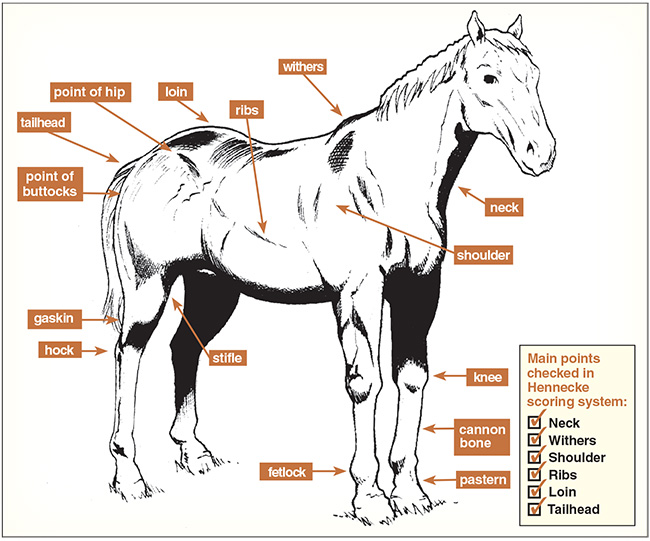American Farriers Journal
American Farriers Journal is the “hands-on” magazine for professional farriers, equine veterinarians and horse care product and service buyers.
A rating with the Henneke body condition scoring system is determined with a scale ranging from 1 to 9, where 1 is considered to be a fully emaciated horse and 9 is grossly obese. By averaging the scores that result from palpating the body in each of the following areas, you can come up with an overall score for your client’s horses:
Along the ribs. (A score of 5 is assigned if you can easily feel the ribs, but do not see them.)
Tail head. (This should be flat, without any bulging fat.)
Crest of the neck. (This should be muscled, but not fatty.)
Behind the shoulder. (The shoulder should blend easily and visibly into the body.)
Along the withers.
Most horses fall within the 4, 5 and 6 range. Any horse with a rating of over 6 is considered overweight. A score of 7 or higher indicates the horse is obese.
Your hoof-care clients should work with you or their veterinarian to learn how to properly do a body condition score since most horse owners tend to underestimate their horses’ scores. In other words, they think their horses are skinnier than they really are.

Several parts of the horse can be evaluated…